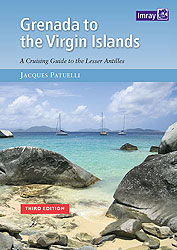| |
|

Where to stay and what to see
 St Lucia’s charm lies above all in the St Lucia’s charm lies above all in the
spectacular mountains, magnificent
beaches and small, unspoiled villages.
The best known geological phenomenon,
the Deux Pitons, two amazing volcanic
sugar loaves, has become the national
emblem. In order to protect the lovely
landscape’s luxuriant vegetation, its birds
and reptiles and its underwater world,
numerous nature reserves have been
created. You may be lucky enough to see
the famous St Lucia parrot (Amazona
versicolor), now a protected species.
|
|
|
|
Castries
The capital has a population of around
50,000. It has been destroyed by fire
several times, most recently in 1948.
Founded by the French in the 18th
century, the town was named in 1785
after General de Castries, then minister
of Louis XVI’s navy. For a long time it
was the busiest deepwater port in the
West Indies. Of the old colonial houses
the few remaining are on Brazil Street
and around the former Columbus
Square, now renamed Derek Walcott
Square in honour of the Nobel laureate,
who was a native of the island. Nearby
is the huge Cathedral of the Immaculate
Around the island : 
|
|
|







